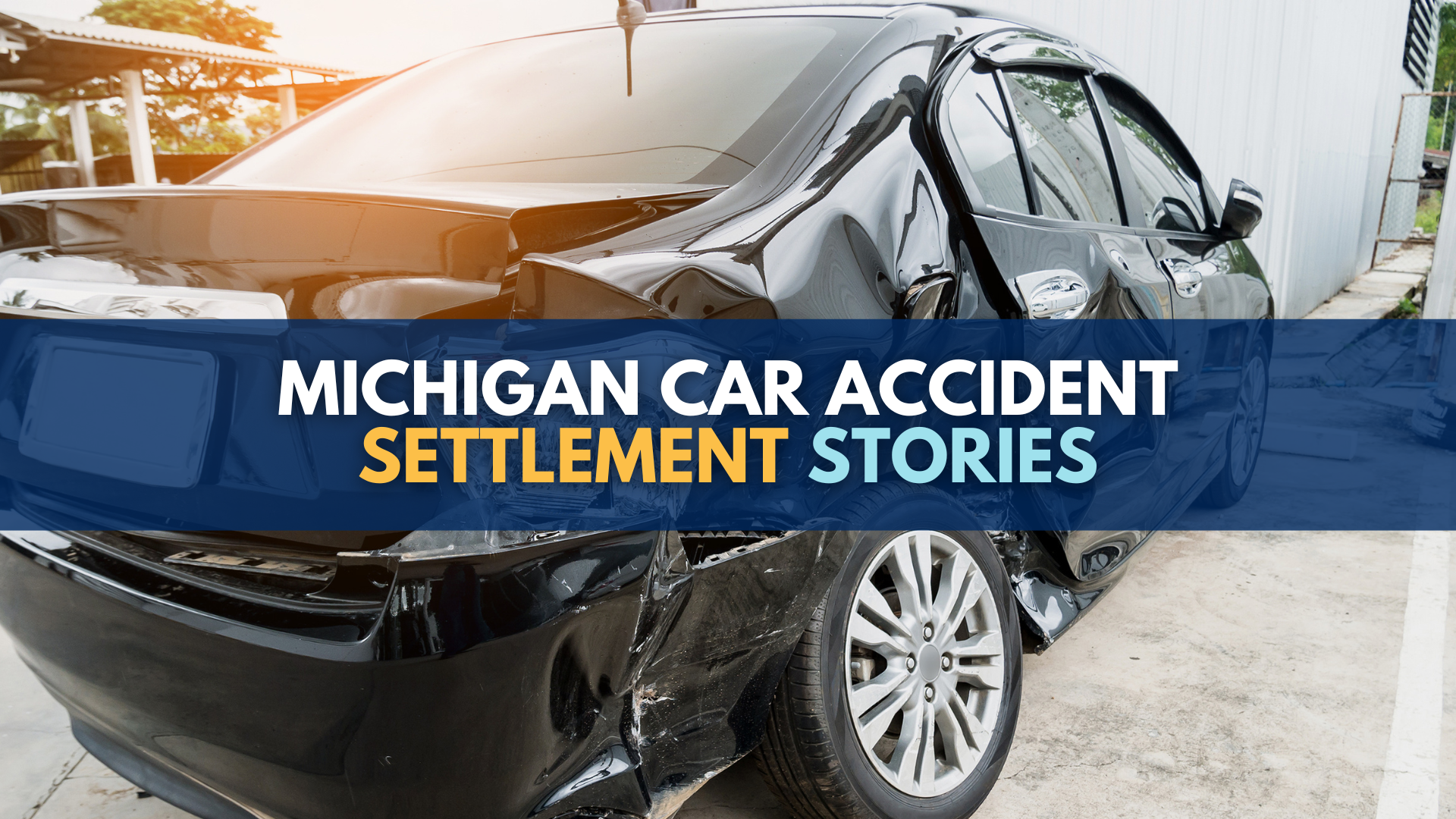On December 4, 2007, the Michigan Supreme Court heard oral argument in Jones v. Olson. This has many Michigan lawyers predicting an end for all but the most catastrophic car accident injury cases in this state.
Many personal injury lawyers already familiar with this divided Court have questioned why the Michigan Supreme Court would wish to grant leave on this case, except to obviously reverse the lower court decision. The Court of Appeals had previously found that plaintiff Greg Jones, who was injured and disabled from work after his car accident for roughly six months, but who then made a very good recovery, should be allowed a day in court to pursue a claim for pain and suffering damages under Michigan’s automobile accident threshold law.
If Jones is reversed, the Court’s four justice majority would be telling lawyers and judges that six months of pain and disability following a car accident in Michigan is no longer good enough.
It would amount to the Court essentially re-writing Michigan’s auto accident threshold law. Again.
Welcome to Michigan Auto Law, Version 3.0.
The Michigan Legislature wrote a short, simple and unambiguous definition of serious impairment of body function in 1995, giving Michigan lawyers and judges for the first time since the No Fault Act was enacted in 1973 a legislative definition of serious impairment. That was Michigan Auto Law, Version 1.0.
Michigan Auto Law, Version 2.0 was the “update” by our Supreme Court in 2004. The four justice majority that decided the case of Kreiner v. Fischer took a decidedly “non textualist” approach in this new update version. Version 2.0 included entirely new language like “course or trajectory,” “entire normal life,” and “physician-imposed versus self-imposed restrictions” that made Version 2.0 far more difficult and restrictive for “users,” that is, people injured through no fault of their own in automobile accidents in this state.
This new Kreiner version featured “updates” that were not in the legislature’s statutory definition of serious impairment or the legislative history. In Version 2.0, the Court also wrote that this new statutory definition was actually a return to Cassidy v McGovern, even though the Michigan Legislature had specifically rejected the Cassidy “objective person” life impact test for a clearly easier subjective life impact test.
Jones v. Olson will likely be Version 3.0, as this Court essentially re-writes Michigan’s automobile accident threshold law again. In Version 3.0, the Court will decide how long a person’s life must be affected by an auto accident. If the Court’s four Justice majority decides that six months of injury and disability is no longer good enough to have an auto case under Michigan law, it will also contradict what this Court has previously written and likely wipe out most of the auto accident cases in this state.
This Court has previously told us how much of a person’s life must be affected after an auto accident in its leave order in Kreiner. In deciding just how much a person’s life must be changed after a car accident, the Court provided this important guidance for Michigan lawyers and judges when it wrote:
“…The circuit court granted defendant’s motion for summary disposition, concluding that plaintiff’s impairment is not ‘serious enough’ to meet the tort threshold. The Court of Appeals reversed, concluding that plaintiff is not required to show that his impairment ‘seriously’ affects his ability to lead his normal life in order to meet the tort threshold. The Court of Appeals then concluded that, if the facts as alleged by plaintiff are true, his impairment has affected his general ability to lead his normal life. In our judgment, both the circuit court and the Court of Appeals erred. Although a serious effect is not required, any effect does not suffice either. Instead, the effect must be on one’s general ability to lead his normal life….” Kreiner v Fischer, 468 Mich 884 (2003).
Let’s turn now to the facts in Jones v. Olson.
On August 1, 2003, Douglas Jones was injured in a car accident. The defendant caused the car accident by pulling in front of Jones’ oncoming car as he was entering an intersection. Mr. Jones had the right of way and was not at fault in the accident. After the crash, he was taken to the hospital, complaining of neck and back pain. The treating doctors diagnosed him with a fractured vertebra in his neck.
Before his car accident, Mr. Jones had worked as a construction worker. He normally worked 40-hour weeks and he testified in his deposition that he was unable to engage in his normal life activities, such as hunting, playing softball, performing yard work, and taking long walks with his girlfriend. More importantly, Mr. Jones testified that for two months after his car accident, he had difficulty getting himself dressed, feeding himself, and caring for his child. He also was unable to engage in any intimate relations during this time.
After undergoing physical therapy, his injuries began to improve. Approximately five and half months after his crash, one medical report stated that Mr. Jones could now return to heavy construction work, but that he was restricted to only three hours per day on weekdays, or two days per week, increasing to full-time over the following two to four weeks. Jones did not return to work until March 2004, however, due to the seasonal nature of his job. When he did return to work, Jones was under no medical work restrictions.
Jones testified that after returning to work in March 2004, he had not missed any time from his job and that he had been able to resume all his pre-accident normal life activities. The defense lawyer hired by the insurance company representing the defendants moved for summary disposition, asserting that Jones failed to suffer a serious impairment of body function. The trial court ruled that Jones’ impairment from his car accident was objectively manifested, but that he had not established a fact question as to whether the course or trajectory of his life had been affected to such an extent that he was unable to lead his normal life after his accident.
The Court of Appeals, in an unpublished opinion, reversed the trial court and remanded the case back for trial. The Court of Appeals wrote that “a temporary interruption of a plaintiff’s ability to lead his normal life” may constitute a serious impairment under Michigan law. The appellate court found that the “totality of the circumstances” created a question of fact that should allow Jones to seek non-economic (pain and suffering) damages for injuries from his car accident.
1995 PA 222 to Kreiner to Jones – Welcome to Michigan Auto Law 3.0
The statutory definition of a serious impairment of body function has not changed since it was written and enacted by the Michigan Legislature back in 1995. It just feels like it has.
It is hard to comprehend how a clear and unambiguous statutory definition of serious impairment, presumably carefully drafted by the legislature, has now metastized into dismissing the cases of innocent people who suffer serious injuries like fractures that cause them to miss six months from work or more.
For the unsuspecting public, it is impossible for them to believe.
This ever more restrictive “threshold creep” in Michigan’s auto law now threatens to close the courthouse doors to all but the most catastrophic of automobile accident cases. This was not the legislature’s intent. How can we possibly reconcile cases like this one for Greg Jones, a decent man who was seriously injured in a car accident that was not his fault, and who was left for six months unable to return to work, with our own Court’s previous guidance that “a serious effect is not required?”
How can this be reconciled with what our Court stated in Kreiner, writing:
“that the duration of the impairment is short does not necessarily preclude a finding of a serious impairment of body function[.]”
“We conclude that an injury need not be permanent to be serious”.
How can any lawyer or judge reconcile these statements with the facts in Jones v. Olson?
Version 3.0 may be in stores soon. Users beware.



With regard to the quotes from Kreiner that close the post,
“that the duration of the impairment is short does not necessarily preclude a finding of a serious impairment of body function[.]”
“We conclude that an injury need not be permanent to be serious”,
maybe our Supreme Court, in the upcoming Jones opinion, as they have in many other cases, will hold that Kreiner was “wrongly decided”.
Hello,
My Name is, George
good overall content
this is my site:
https://egV19GSFWk.spaces.live.com/